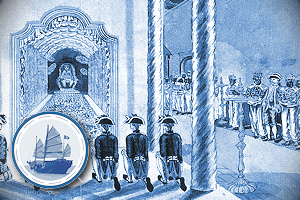Maritime Asia, Arabia and Persia, and South Africa


Arab, Armenian, Indian and other traders from the West linked the Spice Islands up to the trading system of the Old World. On the Eastern side, Chinese and other traders around the South China Sea likewise contributed to the exchange of produce, the migration of peoples and exchange of ideas, culture and technologies. In the sixteenth century, the Portuguese and other Europeans established links between the traditional medieval Asian nodal points of trade and the rest of the world thus ushering in the First Global Era.
Via the Cape of Good Hope (founded in 1652 by Jan van Riebeeck), Asian goods were transported to Europe, but there was not much Europe could offer in return at this time except cash and technology. Throughout the history of Asia, its specific geographical conditions including coastlines, river systems and connecting seas have encouraged people to migrate and travel. Trading exchangesand commercial contracts followed in their wake. The seventeenth- and eighteenth-century VOC archives were generated in that world in flux. In part, they bear witness to the traditional flow of goods and migration of people, for example, the traditional export of Coromandel textiles and Bengal opium to Sumatra and Java.










